

This site contains separate pages for:
-
✴Palazzo Mazzancolli; and
The other important patrician palaces of Terni are described here.
Palazzo Carrara (ca. 1370)
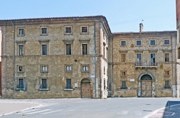
Francesco Carrara built the first palace here in ca. 1370. It has been restored and extended over the centuries. It passed to the Commune in 1712, when the Carrara family became extinct.
The cornice (16th century) in Via Carrara contains stucco reliefs of the Carrara arms (rampant lions and towers).
Palazzo Carrara housed: the Pinacoteca Comunale in the period 1933-64; and both the Museo Archeologico and the Biblioteca Comunale in the period 1933-2004.
[Frescoes attributed to Girolamo Troppa.]
Palazzo Giocosi Mariani (16th century)
This palace in Via Tribunale was built by Cinzio and Drusiano Giocosi. It was probably completed by their nephew, Constantino Giocosi, who is commemorated on the architrave of the entrance to the right. It subsequently passed to the Pericoli and then the Mariani family. After the unification of Italy, it was used as a school. It was restored in 1980-95 and now houses the Istituto Musicale Briccialdi.
The frescoes in Palazzo Giocosi, and particularly those in the Salone (now the Sala Stanislao Falchi) are probably those recorded by Karel van Mander in 1604 as the work of Johann Marten Stellaert and Gillis Congnet:
-
✴an inscribed date 1567 was found under the fresco of Venus and Adonis in the Sala Stanislao Falchi during a restoration carried out in 2002; and
-
✴the fresco of Moses and Aaron before Pharaoh in what is now Sala Alessandro Casagrande used to have an inscription dated 1568.
Palazzo Gregori-Canale-Morelli
Text
[See this website on Palazzo Gregori-Canale-Morelli]
[Frescoes attributed to Girolamo Troppa.]
Palazzo Manassei (17th century)
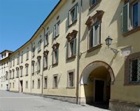

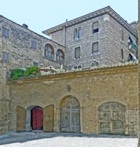
The inscription on a Roman statue (1st century AD) on the first landing of the external staircase in the courtyard makes the somewhat speculative claim that this is the effigy of the historian Gaius Cornelius Tacitus (died ca. 117 AD) and that it had decorated his monument. The statue was found in the 19th century in Via Tre Monumenti, which was named for three mausoleums (Tre Monumenti) that, according to a tradition, belonged to: Gaius Cornelius Tacitus; the Emperor Tacitus (275-6 AD); and his half-brother and successor, the Emperor Florianus (276 AD). The Manassei family acquired the statue because they claimed that their palace was built on the site of the family home of the Emperor Tacitus.
Palazzo Montani (17th century)
Text
[Frescoes attributed to Girolamo Troppa.]
Palazzo Rosci (16th century)
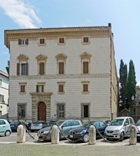
[The cornices of the windows, are decorated with Angevin lilies, come from the first palace on the site.]
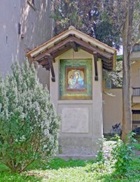
[Remains of Roman mosaic]
Torre Barbarasa (13th century)
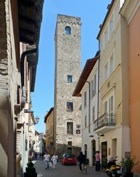
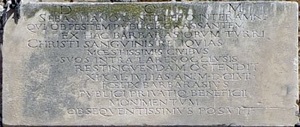
An inscription on the tower (to the left of the window above the portal in this illustration) records that Bishop Sebastiano Gentili displayed a reliquary of the Blood of Christ on top of it to protect the city from plague in 1657.
Return to Monuments in Terni.
Return to the Walk I or Walk II (Palazzo Carrara and Palazzo Manassei).

